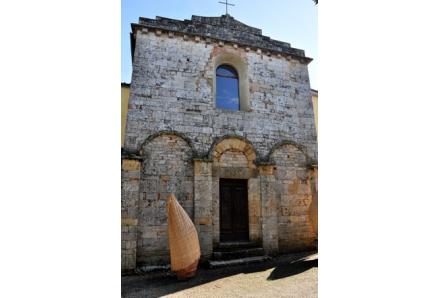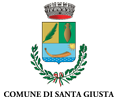The Church
Set in an evocative naturalistic context of hills covered with woodlands, vineyards and olive groves, Morrona abbey currently belongs to a private property. Legend has it that the monastery was founded by the Arian Lombard Radari, converted to Christianity after the arrival of San Colombano monks in Valdera.
The present church and the monastery would be built in the 12th century; Volterra bishops turned the latter into a country mansion in the 15th century.
A long time ago, an ancient Virgin was kept inside the church, attributed to Maestro di S.Torpé.
Description »
The badia of Morrona is comprised within the monasteries founded by lay families, in this case the Cadolingi household. This strategy was used as an attempt to safeguard the family heritage.
In the 12th century, when the Camaldolese Order acquired the complex, the church was restored assuming the T-configuration, with a protruding transept (now no longer visible on the exterior) and a bell tower at its side, later replaced by a bell gable raised on the roof.
The transept arms could be accessed through two arcades, as in the church of Querceto.
Either the exterior and the interior have preserved Romanesque building and decorative features.
The lower course of the façade is marked by three blind arcades and a window above, opened in modern times.
Inside, the presbytery superelevation hosts no crypt underneath. On the left side of the transept, a door once led directly to the monastery.
The Romanesque apse with the three, single-light splayed windows is now inbuilt within the mansion.
History »
Notwithstanding a legend attributing its building to the Arian Lombard Radari, documents report that the monastery was built in 1089 by will of Ugo II (of the Cadolingi household) and his wife Cilia, in a location slightly northwards of their castle.
Risen as a family monastery, the complex was entrusted to the Order of the Camaldolese monks in 1109; the church construction dates back to this phase. Dedicated to Saints Mary and Benedict, it was built according to the usual, T-shaped monastic plan scheme.
Provided with lands, mansions, vineyards, woodlands and mills dotting the surrounding territory, the monastery had been thriving until 1482, when it was included in the bishop of Volterra’s property. The monastic complex was then used as a luxury mansion; still today, it shows the marks of its complex transformation.
In 1865, the facility passed under the state property, to be later alienated to private owners.
Works »
A long time ago, an ancient icon was placed on the high altar, portraying a Virgin – by the Master of S. Torpé, datable to the 14th century – to whom the religious community was very devoted. The side walls have conserved a portion of frescoes featuring the twelve apostles, made in the 16th century and restored in the 18th century by the painter Domenico Tempesti.
Restorations »
The church underwent several renovation works throughout the centuries, in particular during the 16th century, to comply with Counter-Reformation rules, and in the 18th century.
The monastic complex was first turned into an episcopal residence and then in a luxury mansion.
In the inner yard, the cloister facilities in brickwork are still visible and the original forms may be inferred, salvaged during a 19th-century restoration. Subsequently fractioned into different properties, the complex was recently reclaimed and turned into a farm estate.
Bibliography »
M. A. Giusti, Le ville della Valdera, Pontedera, Ecofor, 1995, pp.102-103.
S. Scalfati, La Badia di Morrona e il suo territorio nel medioevo e in età moderna, Pisa, Pacini, 2009.
Location





























